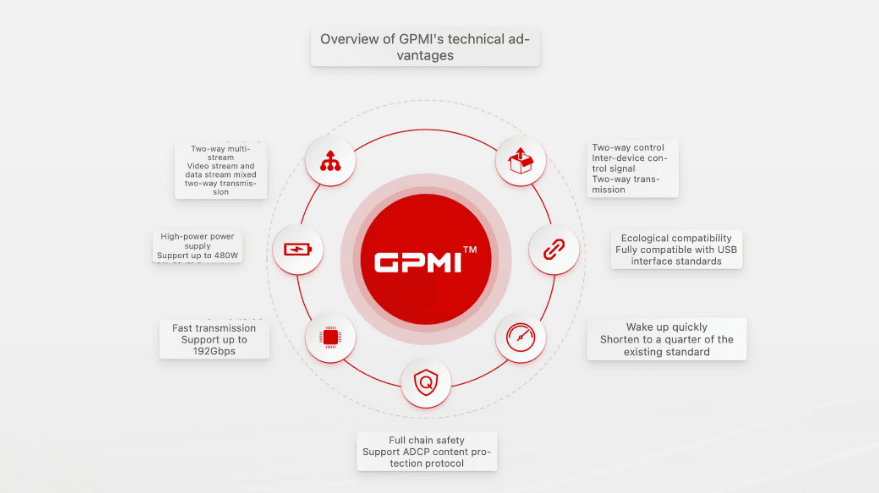
A consortium of more than 50 Chinese technology companies has created a rival to the HDMI interface that has become the universal standard for connecting TVs to games consoles and AV equipment.
It’s called the General Purpose Media Interface or GPMI, and it will be available in two different versions, Type-C and Type-B. Intriguingly, both of the standards look like they’ll surpass the capabilities of the existing HDMI 2.1 standard in terms of bandwidth and functionality.
If we’re going to be honest, the HDMI standard is long due a rival, having ruled the roost in the TV industry ever since it first appeared back in 2022. It has enjoyed 23 years as the de facto standard for TV connectivity, but we may finally have an usurper on our hands.
The development of GPMI is being led by the Shenzhen International 8K Ultra HD Video Industry Collaboration Alliance, but it was a chipmaker called HiSilicon, one of the key partners in that alliance, that revealed the standard in a new whitepaper.
According to HiSilicon, the GPMI Type-C version will support up to 96 gigabytes per second of bandwidth, which is the same as the upcoming HDMI 2.2 specification that was announced at CES 2025 in January. Meanwhile the Type-B standard will extend that to an impressive 192Gbps.
As such, both Type-C and Type-B will be capable of supporting “8K ultra-high-definition video transmission”, taking advantage of that extremely generous bandwidth.
However it’s not just the bandwidth that’s so impressive. Besides transporting picture and sound signals, GPMI will also be able to deliver both power and data, similar to the Thunderbolt 5 connection that’s used on Apple Macs and some higher-end Windows PCs. HDMI 2.1, in contrast, is limited to just pictures and sound.
In addition, GPMI also features the ability to control equipment similar to the way HDMI CEC does. So one GPMI-enabled device, such as a TV, would be able to power a connected device such as a console or an amplifier, eliminating the need for multiple power cables.
HiSilicon said the GPMI Type-C version will use the existing USB-C connection, which is the same as Thunderbolt 5, delivering up to 240-watts of power, while GPMI Type-B will have its own, proprietary connection interface and deliver up to 480W of power.

We don’t yet know when the GPMI standard will become a thing, but TV makers including Hisense, TCL, Skyworth and Konka are all members of the founding association and have confirmed they’ll support it on future televisions. Whether we’ll see it on their 2025 TV models remains uncertain, and it could be that the standard is still some months from being ready.
Other notable Chinese brands, including Huawei and Xiaomi, have also said they’ll support the GPMI standard.
There are also questions around the project’s ambition. It’s not clear yet if GMPI will attempt to compete with HDMI on a global scale, or if the interface will only be integrated on products destined for China’s domestic market.
Nonetheless, the imminent arrival of GMPI can be seen as something of a statement by the Chinese companies, indicating they’re looking to take a more active role in the future direction of the TV technology industry, in-line with their growing dominance of the TV and display making industries.
One of the biggest questions is whether or not international brands will adopt the GMPI standard. When the HDMI 2.2 format was unveiled at CES, a big fuss was made about its ability to support higher refresh rates, paving the way for higher-quality pictures and sound and the potential emergence of data-intensive applications such as spatial reality and virtual reality content.
GPMI will likely outshine HDMI 2.2, and its support for rapid 8K video signals may mean that it appeals to Samsung, which continues to launch new 8K televisions every year, even as other manufacturers give up the ghost.